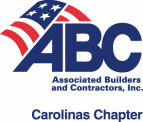My recent musings about the Court of Appeals’ December 6, 2011 Southern Seeding decision (my original blawg post about the case is here; a longer treatment in this quarter’s Change Order, published by the Construction Law Section of the North Carolina Bar Association, can be found here) neglect to address the opinion’s implications for surety companies issuing payment bonds in North Carolina.
Those implications are profound and potentially far-reaching, and certainly worthy of discussion. So for those of you, like me, who have a keen interest in North Carolina suretyship law, you’ll definitely want to keep reading.
I won’t rehash the facts and holding of Southern Seeding, other than to say that the decision allowed a sub-subcontractor to recover labor and material price escalation damages from a subcontractor despite the presence of a “no damages for delay” clause in the pertinent sub-subcontract. After so holding, the COA moves on to a discussion about the potential liability of the prime contractor’s co-sureties (presumably the $100m+ size of the bonded prime contract required two sureties) for the increased labor and material costs incurred by the sub-sub/bond claimant.
That discussion focuses on how, as a general proposition, second-tier subcontractors are intended beneficiaries of a general contractor’s payment bond, and are therefore entitled to bond proceeds when not paid by the subcontractor above them in the contractual chain. The COA goes on to reject the trial court’s conclusions that the payment bond applied only to labor and materials for work provided under the prime contract, and not to a breach of the sub-subcontract. The Court reasoned that since the sub-sub was seeking recovery based upon a payment bond issued by a general contractor, and since the bond applied to “all persons supplying labor and materials in the prosecution of the Project,” the co-sureties were liable on the sub-sub’s claim.
I’d have no qualms about either this holding or the rationale for it had the sub-sub in Southern Seeding simply been seeking payment for unpaid base scope of work. But that wasn’t the case. The sub-sub was seeking price escalation damages arising under a unique term of the sub-subcontract, a term that had no existence in the general contractor’s prime contract with the owner, and no existence in the general contractor’s subcontract with its grading subcontractor. That distinction isn’t mentioned anywhere in the decision. Indeed, based on my review of the appellate record, it’s an open question whether the Court was ever encouraged to even consider that distinction.
In an event, and as a good friend and fellow construction law practitioner has observed, the implications of the Southern Seeding decision for surety companies doing business in North Carolina are potentially huge:
[T]he language that most folks are familiar with respect to surety liability is that the obligation of the bond (and, consequently, the liability of the surety) is ordinarily to be read in light of the contract it is given to secure. Yet in practice, as illustrated by Southern Seeding, the rule appears to be that the surety’s obligation on the payment bond is measured instead by the terms of the claimant’s contract (absent fraud or coercion, and of course subject to any available defenses such as the penal sum of the bond).
I suspect my buddy is right, and that the risk of surety companies issuing payment bonds in North Carolina has been unwittingly — yet significantly — increased to include risks arising completely outside the bonded contract and over which sureties can exert little, if any, control. In my view, and irrespective of the propriety or impropriety of the apparent rule that has emerged from the Court of Appeals here, such an expansion in a surety’s obligation deserved more thorough deliberation than it received in the Southern Seeding opinion.






